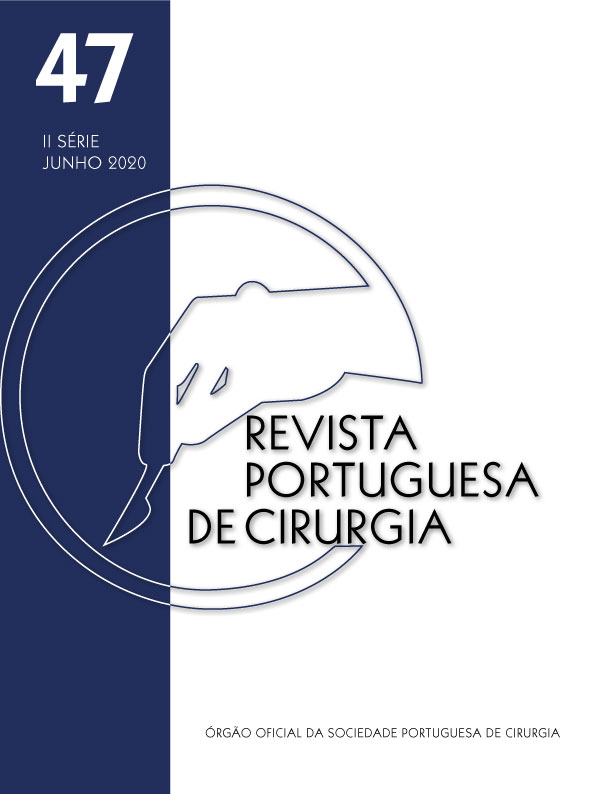CIRCULATING TUMOUR CELLS: A PORTUGUESE CONTRIBUTION TOWARDS PRECISION MEDICINE
DOI:
https://doi.org/10.34635/rpc.806Keywords:
Circulating tumour cells, CTCs, Cancer, Metastasis, Liquid BiopsyAbstract
In the context of cancer, liquid biopsy refers to the capture and subsequent analysis of tumour material, such as circulating tumour cells (CTCs), circulating tumour nucleic acids and tumour-derived extracellular vesicles, present in the blood of patients with cancer, or even in other body fluids. CTCs are shed from primary tumours or metastatic sites and have a short half-life in circulation, therefore providing information about the biology of cancer in real time and holding great potential as a biomarker for cancer diagnosis, management, and prognosis. As a result, several technologies have been developed over the years in order to efficiently capture these cells with the ultimate goal of revolutionizing cancer assessment. A great focus is deserved on microfluidic-based approaches for CTC isolation, as they provide unprecedented sensitivity and purity, while keeping low cost. In this article, we discuss the huge impact that CTCs could have in oncology and ultimately in precision medicine regarding its greatest advantages against other circulating biomarkers, but we also consider its main limitations and current challenges to be implemented into the clinic.
Downloads
References
2606–2619.
(2) Pantel, K., & Alix-Panabières, C. (2013). Real-time liquid biopsy in cancer patients: Fact or fiction? Cancer Research, 73(21),
6384–6388.
(3) Zou D, Cui D. Advances in isolation and detection of circulating tumor cells based on microfluidics. Cancer Biol Med. 2018;15(4):
335-353. doi:10.20892/j.issn.2095-3941.2018.0256
(4) Alix-Panabier`es, C., & Pantel, K. (2013). Circulating tumor cells: Liquid biopsy of cancer. Clinical Chemistry, 59(1), 110–118.).
(5) Wisha, M. & Hayes, D. (2011). Circulating Tumour Cells: not all detected cells are bad and not all bad cells are detected. Journal
of Clinical Oncology, 29(12), 1508-1511.
(6) Andree, K. C., van Dalum, G., & Terstappen, L. W. M. M. (2016). Challenges in circulating tumor cell detection by the CellSearch
system. Molecular Oncology, 10(3), 395–407.
(7) Tralhao, J. G.; Hoti, E.; Serodio, M.; Laranjeiro, P.; Paiva, A.; Abrantes, A. M.; Pais, M. L.; Botelho, M. F.; Sousa, F. Castro.
(2010). Perioperative tumor cell dissemination in patients with primary or metastatic colorectal cancer. 36 (2), 125-129. 10.1016/j.
ejso.2009.07.003.
(8) Fast and efficient microfluidic cell filter for isolation of circulating tumor cells from unprocessed whole blood of colorectal cancer
patients. S. Ribeiro-Samy, M. Oliveira, T. Pereira, L. Muinelo, J. Gaspar, P. Freitas, R. López, C. Costa, L. Diéguez. Scientific Reports
9, 1-12 (2019)
(9) Lima, L., Neves, M., Oliveira, M. I., Dieguez, L., Freitas, R., Azevedo, R., … Ferreira, J. A. (2017). Sialyl-Tn identifies muscle-invasive
bladder cancer basal and luminal subtypes facing decreased survival, being expressed by circulating tumor cells and metastases.
Urologic Oncology: Seminars and Original Investigations, 35(12), 675.e1-675.e8. https://doi.org/10.1016/j.urolonc.2017.08.012
(10) Exploring sialyl-Tn expression in microfluidic-isolated circulating tumour cells: a novel biomarker for precision oncology applications.
Neves, M.; Azevedo, R.; Lima, L.; Oliveira, M.; Peixoto, A.; Ferreira, D.; Soares, J.; Fernandes, E.; Gaiteiro, C.; Palmeira, C.; Cotton,
S.; Santos, M.; Mereiter, S.; Campos, D.; Afonso, L.; Ribeiro, R.; Fraga, A.; Tavares, A.; Mansinho, H.; Monteiro, E.; Videira, P.;
Freitas, P.; Celso, R.G.; Santos, L.; Diéguez, L.; Ferreira, J. A. New Biotechnology, 2019, 49, 77-87.
(11) Leong, S. M., Tan, K. M. L., Chua, H. W., Tan, D., Fareda, D., Osmany, S., … Koay, E. S. C. (2015). Sampling circulating tumor
cells for clinical benefits: How frequent? Journal of Hematology and Oncology, 8(1), 1–8.
(12) Abalde-Cela S, Piairo P, Diéguez L: The Significance of Circulating Tumour Cells in the Clinic. Acta Cytologica 2019;63:466-478.
doi: 10.1159/000495417
(13) Huang, M. Y., Tsai, H. L., Huang, J. J., & Wang, J. Y. (2016). Clinical implications and future perspectives of circulating tumor
cells and biomarkers in clinical outcomes of colorectal cancer. Translational Oncology, 9(4), 340–347.
(14) Yang, C., Xia, B. R., Jin, W. L., & Lou, G. (2019). Circulating tumor cells in precision oncology: Clinical applications in liquid
biopsy and 3D organoid model. Cancer Cell International, 19(1), 1-13.
(15) Mader, S., & Pantel, K. (2017). Liquid biopsy: Current status and future perspectives. Oncology Research and Treatment, 40(7–8),
404–408.
(16) Werner, S., Stenzl, A., Pantel, K., & Todenh, T. (2017). Isolation and Molecular Characterization of Circulating Tumor Cells. In
Advances in Experimental Medicine and Biology (Vol. 994).
(17) Tanaka F, Yoneda K, Kondo N, et al. Circulating tumor cell as a diagnostic marker in primary lung cancer. Clin Cancer Res
2009;15:6980-6.
(18) Alix-Panabières, C., & Pantel, K. (2016). Clinical applications of circulating tumor cells and circulating tumor DNA as liquid
biopsy. Cancer Discovery, 6(5), 479–491.
Downloads
Published
Issue
Section
License
Para permitir ao editor a disseminação do trabalho do(s) autor(es) na sua máxima extensão, o(s) autor(es) deverá(ão) assinar uma Declaração de Cedência dos Direitos de Propriedade (Copyright). O acordo de transferência, (Transfer Agreement), transfere a propriedade do artigo do(s) autor(es) para a Sociedade Portuguesa de Cirurgia.
Se o artigo contiver extractos (incluindo ilustrações) de, ou for baseado no todo ou em parte em outros trabalhos com copyright (incluindo, para evitar dúvidas, material de fontes online ou de intranet), o(s) autor(es) tem(êm) de obter, dos proprietários dos respectivos copyrights, autorização escrita para reprodução desses extractos do(s) artigo(s) em todos os territórios e edições e em todos os meios de expressão e línguas. Todas os formulários de autorização devem ser fornecidos aos editores quando da entrega do artigo.



